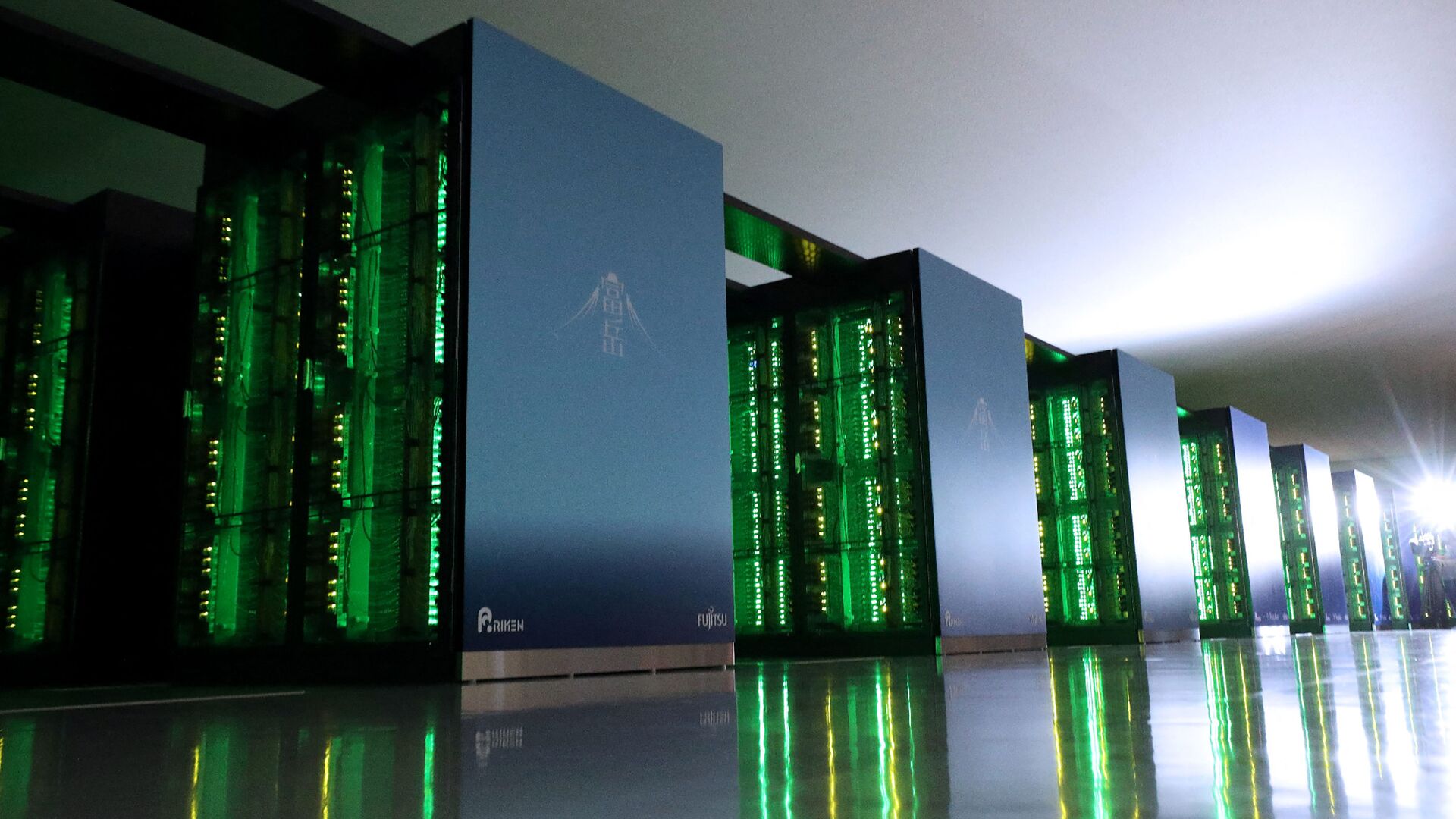https://sputnikglobe.com/20231215/australian-university-unveils-supercomputer-capable-of-brain-scale-simulations-1115604881.html
Australian University Unveils Supercomputer Capable of Brain-Scale Simulations
Australian University Unveils Supercomputer Capable of Brain-Scale Simulations
Sputnik International
Researchers have introduced a supercomputer designed to mimic human brain functions. This cutting-edge neuromorphic system can execute an impressive 228 trillion operations per second, distinguishing itself with its unique design, superior efficiency, and wide range of potential uses.
2023-12-15T13:33+0000
2023-12-15T13:33+0000
2023-12-15T13:33+0000
beyond politics
science & tech
society
aachen
melbourne
sydney
western sydney university, australia
https://cdn1.img.sputnikglobe.com/img/07e5/05/11/1082913160_0:156:3001:1844_1920x0_80_0_0_9a749646a718f3110b8b9f049ea9d6ac.jpg
Researchers at the International Center for Neuromorphic Systems (ICNS) at Western Sydney University have announced the world's first supercomputer, DeepSouth, capable of emulating networks on the scale of the human brain.This supercomputer uses a unique neuromorphic system, working like our brains do. It is swift, carrying out 228 trillion operations per second, about as quickly as the human brain.ICNS Director Professor Andre van Schaik pointed out that DeepSouth stands out in its design model. Conventional prototypes focus on standard computing and are energy-intensive, while DeepSouth is crafted to resemble brain-like networks, cutting down on power usage and boosting efficiency.Schaik told the press that progress in understanding how brains work is limited because it is difficult to imitate large neural networks effectively. He noted that the current method of simulating these brain cell networks on standard computers, which involves graphics processing units (GPUs) and powerful processors with multicore central processing units (CPUs), is inefficient and consumes much energy.DeepSouth, however, overcomes these limitations. “This platform will progress our understanding of the brain and develop brain-scale computing applications in diverse fields, including sensing, biomedical, robotics, space, and large-scale AI applications,” he said.The development of DeepSouth is a joint project involving the Universities of Sydney and Melbourne in Australia as well as Aachen in Germany. They aim to advance smart device technology significantly, improving mobile phones, industrial and agricultural sensors, and AI applications to be smarter and more energy efficient. It will also provide valuable insights into the functioning of the human brain under normal and pathological conditions.
https://sputnikglobe.com/20230902/moscow-state-university-unveils-new-supercomputer-1113056537.html
aachen
melbourne
sydney
Sputnik International
feedback@sputniknews.com
+74956456601
MIA „Rossiya Segodnya“
2023
Chimauchem Nwosu
https://cdn1.img.sputnikglobe.com/img/07e7/09/01/1113046371_0:99:1536:1635_100x100_80_0_0_9c5c627283eca931c39fe4852bbb301c.jpg
Chimauchem Nwosu
https://cdn1.img.sputnikglobe.com/img/07e7/09/01/1113046371_0:99:1536:1635_100x100_80_0_0_9c5c627283eca931c39fe4852bbb301c.jpg
News
en_EN
Sputnik International
feedback@sputniknews.com
+74956456601
MIA „Rossiya Segodnya“
Sputnik International
feedback@sputniknews.com
+74956456601
MIA „Rossiya Segodnya“
Chimauchem Nwosu
https://cdn1.img.sputnikglobe.com/img/07e7/09/01/1113046371_0:99:1536:1635_100x100_80_0_0_9c5c627283eca931c39fe4852bbb301c.jpg
international centre for neuromorphic systems, western sydney university, supercomputer, deepsouth, neuromorphic system, human brain, brain-like networks, neural networks, professor andre van schaik, brain-scale computing applications, large-scale ai applications, university of sydney, university of melbourne, university of aachen, human brain function.
international centre for neuromorphic systems, western sydney university, supercomputer, deepsouth, neuromorphic system, human brain, brain-like networks, neural networks, professor andre van schaik, brain-scale computing applications, large-scale ai applications, university of sydney, university of melbourne, university of aachen, human brain function.
Australian University Unveils Supercomputer Capable of Brain-Scale Simulations
Researchers have introduced a supercomputer designed to mimic human brain functions. This cutting-edge neuromorphic system can execute an impressive 228 trillion operations per second, distinguishing itself with its unique design, superior efficiency, and wide range of potential uses.
Researchers at the International Center for Neuromorphic Systems (ICNS) at Western Sydney University have announced the world's first
supercomputer,
DeepSouth, capable of emulating networks on the scale of the human brain.
This supercomputer uses a unique neuromorphic system, working like our brains do. It is swift, carrying out 228 trillion operations per second, about as quickly as the human brain.
ICNS Director Professor Andre van Schaik pointed out that DeepSouth stands out in its design model. Conventional prototypes focus on standard computing and are energy-intensive, while DeepSouth is crafted to resemble
brain-like networks, cutting down on power usage and boosting efficiency.

2 September 2023, 09:53 GMT
Schaik told the press that progress in understanding how brains work is limited because it is difficult to imitate large
neural networks effectively. He noted that the current method of simulating these brain cell networks on standard computers, which involves graphics processing units (GPUs) and powerful processors with multicore central processing units (CPUs), is inefficient and consumes much energy.
DeepSouth, however, overcomes these limitations. “This platform will progress our understanding of the brain and develop brain-scale computing applications in diverse fields, including sensing, biomedical, robotics, space, and large-scale AI applications,” he said.
The development of DeepSouth is a joint project involving the Universities of Sydney and Melbourne in Australia as well as Aachen in Germany. They aim to advance smart device technology significantly, improving mobile phones, industrial and agricultural sensors, and AI applications to be smarter and more energy efficient. It will also provide valuable insights into the functioning of the human brain under normal and pathological conditions.




